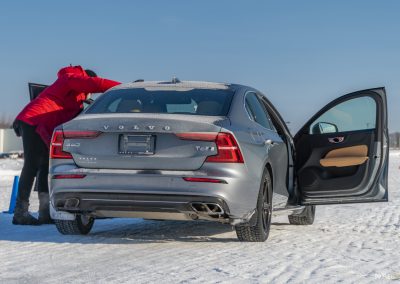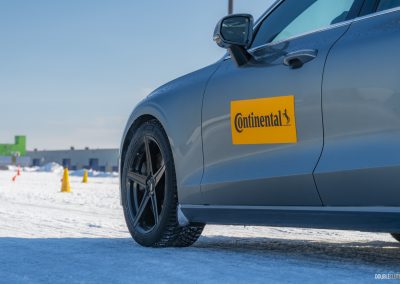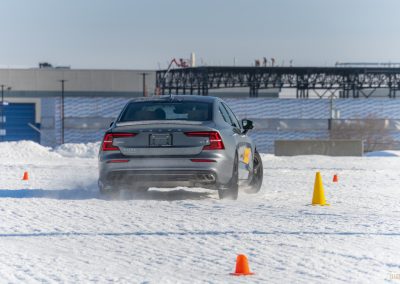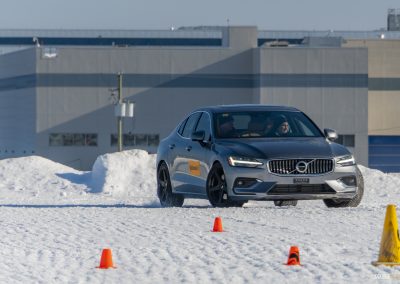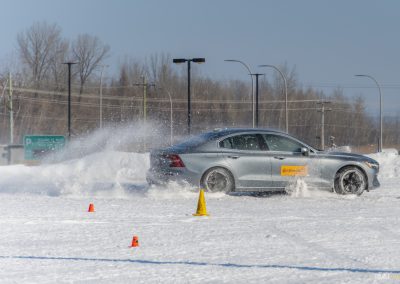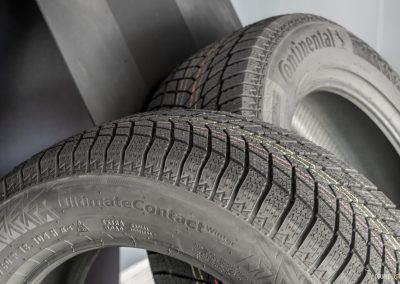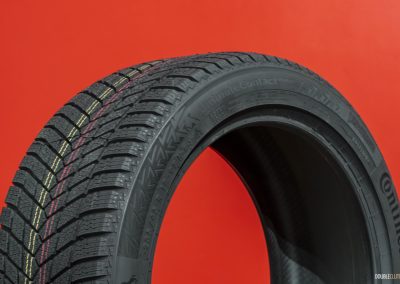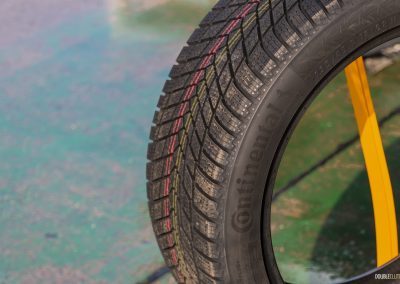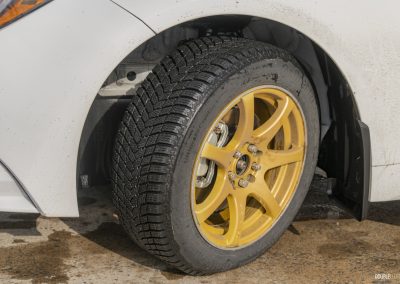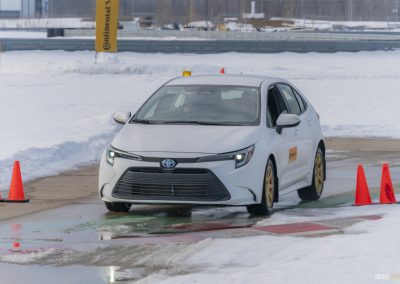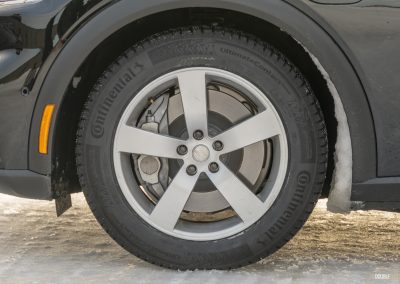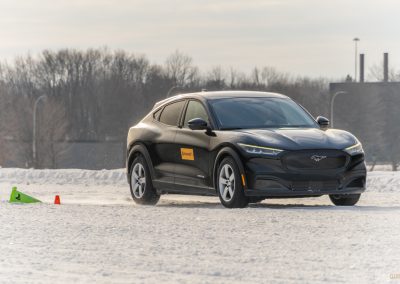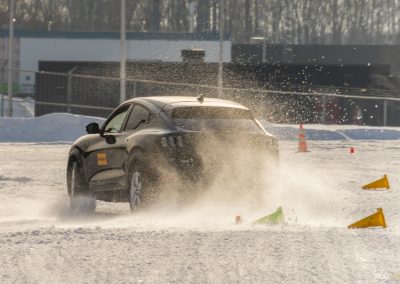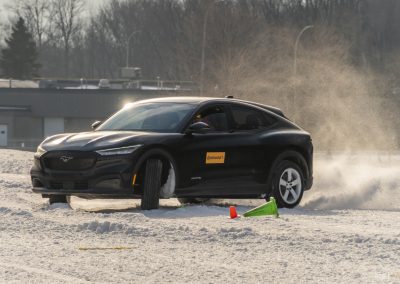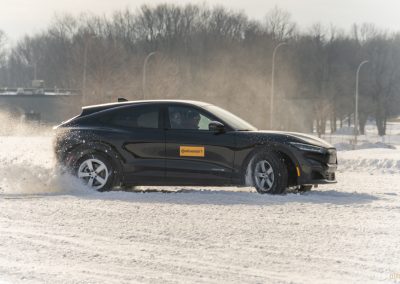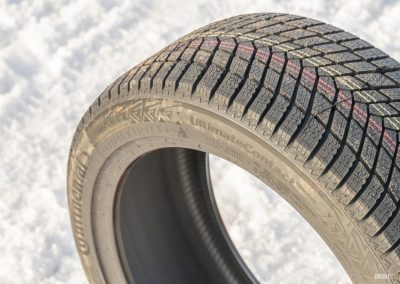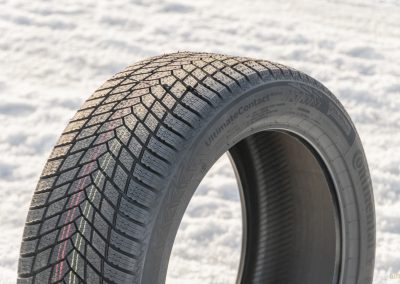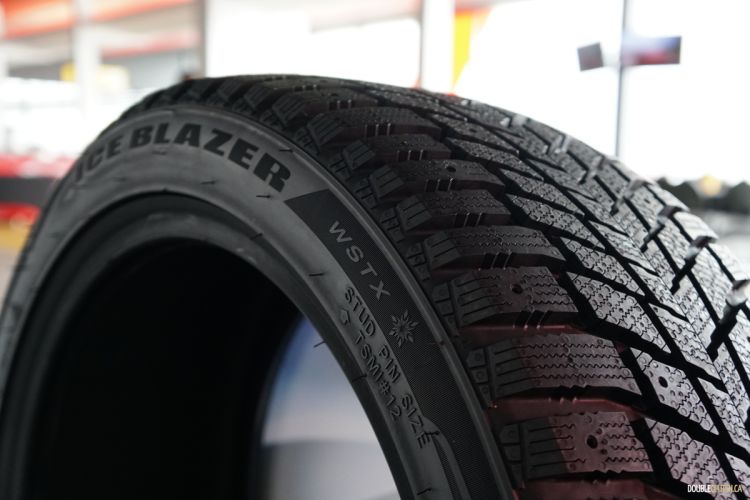MIRABEL, QUE. — They say less is more, but if less is supposed to be so good, imagine how much better more is? Continental has more history, more experience, more research staff, more testing facilities, more production capacity, and more technology than just about any other tire maker. They recently invited us out to the snow-covered ICAR Motorsport Complex in Quebec to evaluate their newest product, the Continental UltimateContact Winter, which aims to deliver more of everything you could possibly want in a tire.
Continental has been around for more than 150 years, putting them among the oldest rubber companies in the world. They are involved in a lot more than just tires, as they produce almost anything from chassis components to electronics for a lot of major automakers — but the tire arm of the business alone employs 57,000 people, with most of the research and development taking place at their global headquarters in Germany. A sizable chunk of their business comes from being one of the choice tire providers for companies like Porsche and BMW, but this new tire is designed to be a replacement unit — something chosen directly by you when it comes to putting on new snowshoes.
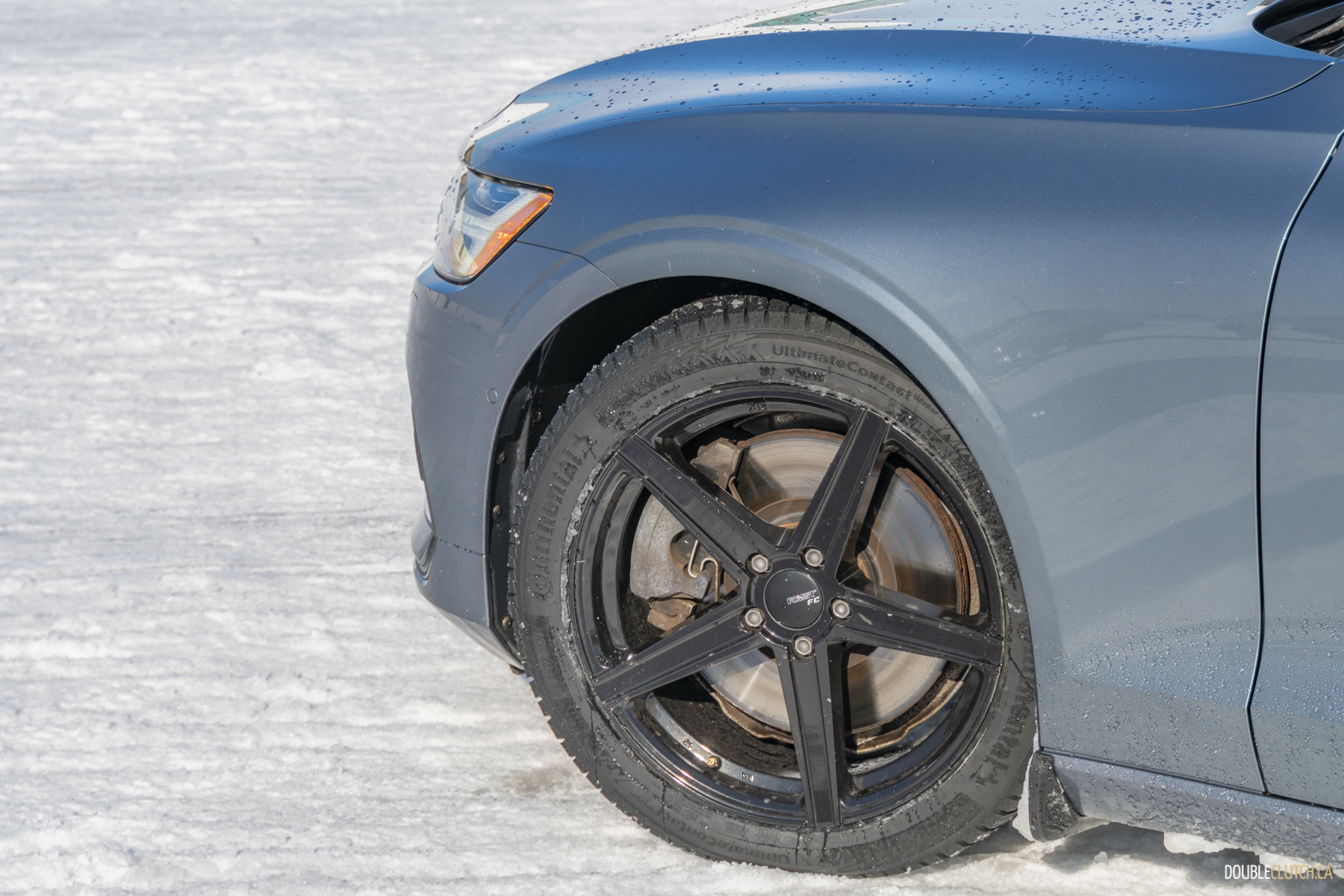
Replacing the WinterContact SI Plus, the UltimateContact Winter is the latest in the Continental’s continued partnership with Canadian Tire. It was developed in conjunction with Canadian Tire, representing a culmination feedback from their vast customer base over many years, reflecting the unique and broad demands Canadian roads place on a tire. As such, the UltimateContact Winter is exclusive to the Canada and nearly all will be produced at Continental’s main production facility in Horbruck, Germany.
The UltimateContact Winter employs Continental’s proven PolarPlus technology, ensuring their carefully chosen blend of rubber compound stays pliant and in better contact with the road at sub-zero temperatures. It also employs a revised silica oil additive called Sliane, designed to improve elasticity and moisture resistance, helping the UltimateContact Winter better slice through the thin layer of water that makes ice so slippery.
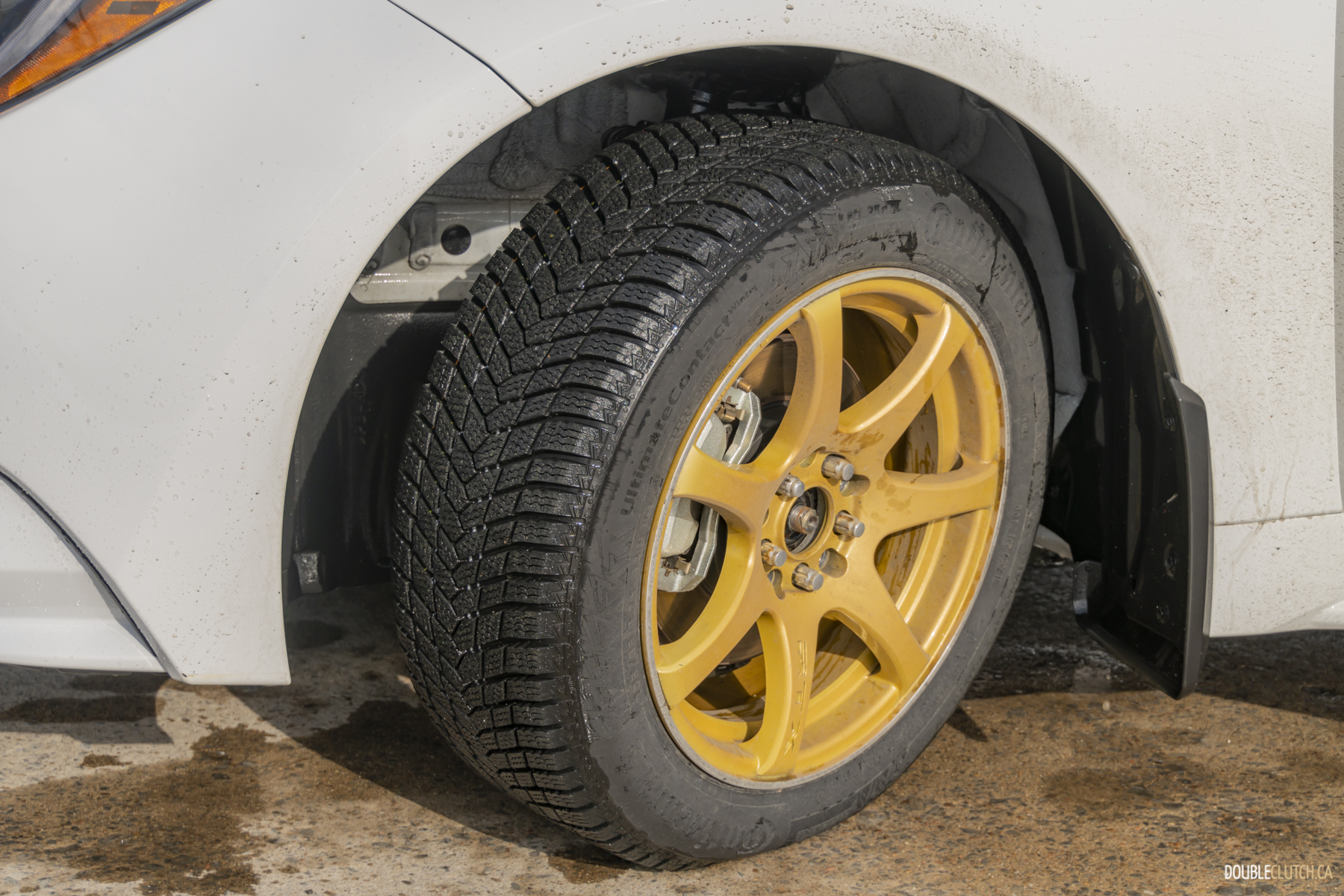
As part of Continental’s pledge to be more sustainable and eventually carbon-neutral by 2050, the Silane oil additive is now sourced from plants — specifically dandelions and nuts — rather than petrochemicals like before. Unlike the useless “sustainable” paper straws we all loathe, Continental has gone to great lengths to ensure the UltimateContact Winter is by no means a compromised product, improving upon rolling resistance plus dry, wet, and ice performance over its predecessor, while offering the same low road noise and hard-wearing tread.
That improved rolling resistance is a major component of the EV checkmark with which Continental is branding all these tires, with the other being that they’re all XL load rated, making it plain-as-day obvious that these tires are ready to roll on all the EVs that are taking over our roads. The UltimateContact Winter be offered in 26 sizes from 15 to 20 inches, deliberately hitting the most common sizes on most cars and SUVs, gas or electric.
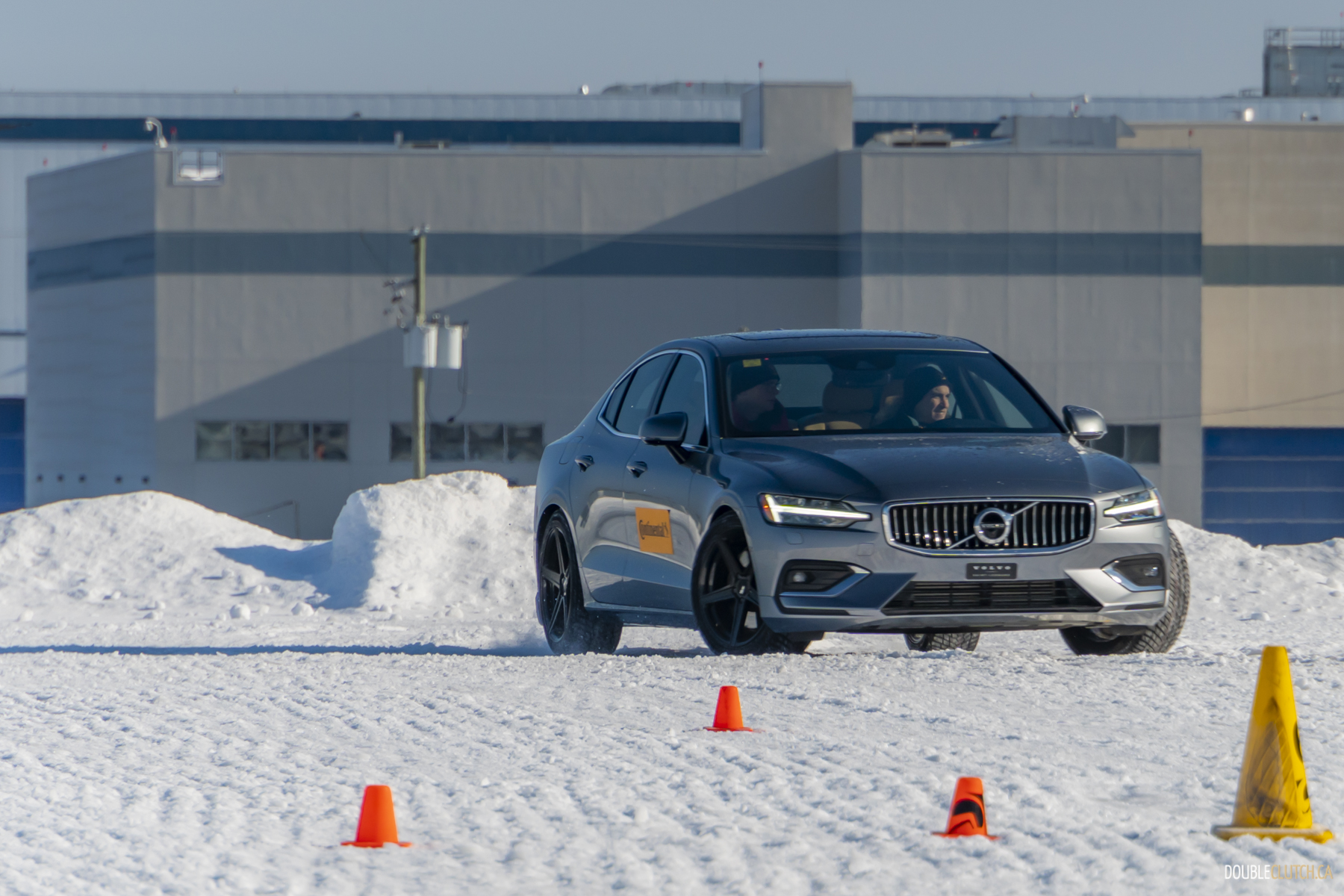
For our evaluation, Continental set up three test courses to compare the new UltimateContact Winter with their top-tier competitors. The first was a pair of Volvo S60 sedans on a snowy autocross course, with the competitor car being fitted with a set of Michelin X-Ice Snow tires, arguably the best winter tire on the market from the largest tire maker on earth. This was perhaps the closest comparison, as both tires exhibited very similar levels of grip under braking and acceleration. But the Michelin-fitted S60 felt decidedly more tail-happy when pitched around tight corners, while the Continental was more planted and reassuring.
The second test was with a trio of Toyota Corolla sedans; two of which were all-wheel-drive hybrids, and one being a base front-driver. One of the AWD Corollas was fitted with a set of Bridgestone Blizzaks for reference, and the course was a mix of dry, wet, and snowy/slushy pavement, similar to what myself and most other city dwellers will deal with on a regular basis. This was a fun test, with patches of slushy snow in the middle of fast corners to deliberately upset the cars. The Continentals shrugged it off, able to carry more speed confidently, while the Blizzaks wanted to push wide as soon as they hit slush. Even the front-drive car on the Continentals was confidently able to nail apexes regardless of whether or not they were covered in snow.
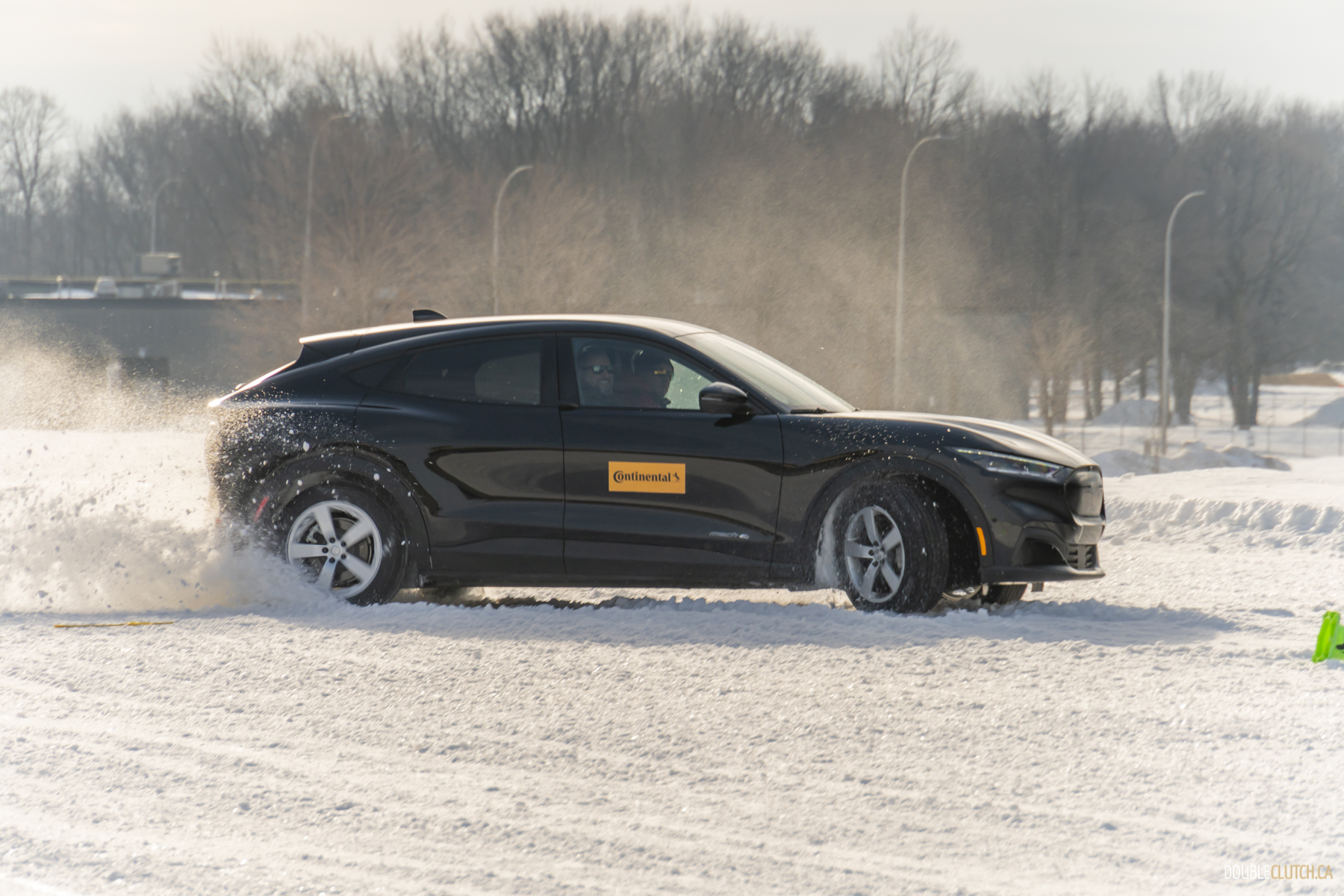
We wrapped up the day with a pair of Ford Mustang Mach-Es, with the competitor car being fitted with Goodyear Winter Command tires. Over the course of the day, the snow track had glazed over under the sun, and refrozen to become a bit of an ice course. This was quite illuminating, because I didn’t realize how slick the track had gotten until I got out of the Continental-fitted Mach-E, and after trying the same panic stop in the Goodyear-shod Mustang, overshot the mark by several car lengths.
None of this should be a surprise from one of the oldest tire companies in the world. Continental has the experience and sheer vastness of engineering know-how to casually sit down and crank out a seemingly impervious tire over and over again, and their partnership with Canadian Tire has only helped them deliver a better product for our intermittently treacherous roads. Neither Continental nor Canadian Tire have provided pricing details for the Continental UltimateContact Winter, but you can expect it to be right in line with the outgoing WinterContact Si Plus. They officially roll out in August, and you can expect to see them offered at a launch discount on the front page of the Canadian Tire flyer in October.

